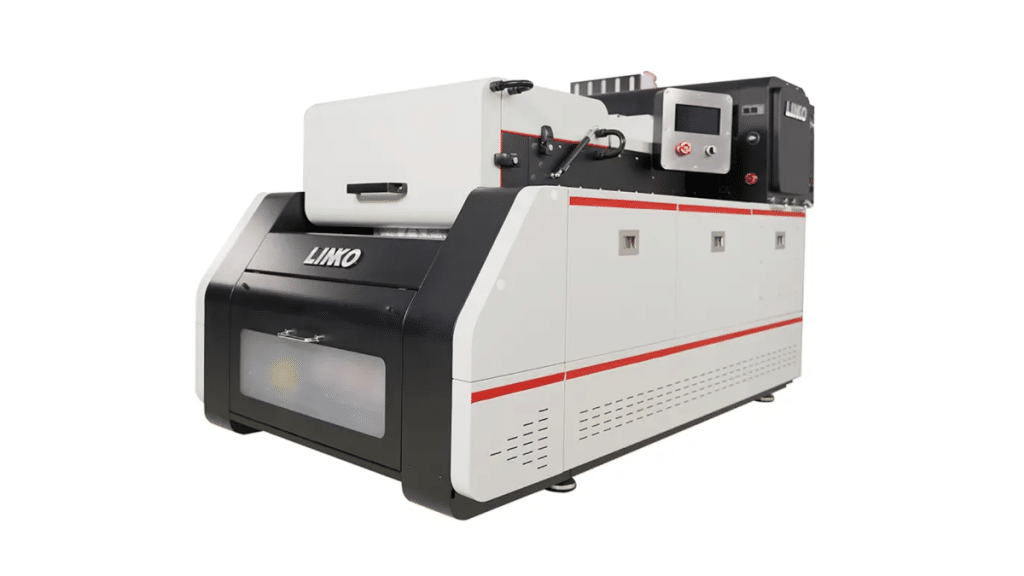Introduction
Starting a business with a Direct to Film (DTF) printer offers a promising avenue for entrepreneurs looking to enter the rapidly growing field of custom apparel and product printing. DTFLINKO has helped tens of thousands of companies and individuals achieve business success. Visit the official website: https://www.dtflinko.com/
DTF technology allows for high-quality prints on a variety of materials, making it a versatile and attractive option for small startups to large operations.
This guide will walk you through everything you need to prepare to start a successful DTF printing business.
Understanding DTF Printing
DTF printing is a digital printing technology that involves applying a graphic to a special film before transferring it to the desired substrate, such as textiles, ceramics, or metals.
This method uses a special kind of ink and a powder adhesive that, once heat-pressed onto the material, ensures a durable and vibrant print.
Market Research and Business Planning
Market Research: Before launching your DTF printing business, it’s important to conduct thorough market research. Identify your target market—be it local businesses, sports teams, or fashion brands—and understand their needs and preferences.
Business Planning: Develop a comprehensive business plan that outlines your business goals, target market, budget, expected profits, and marketing strategy. This plan will serve as a roadmap for your business and is crucial for securing any necessary financing.
Equipment and Materials
Choosing a DTF Printer: Selecting the right DTF printer is crucial. Consider factors such as print quality, speed, and the size of prints it can handle. Balance cost with the capabilities you need for your intended market. DTFLINKO provides you with the most complete series and the best DTF printers.
Consumables: You will need to stock up on consumables such as transfer films, DTF inks, powder adhesives, and pretreatment liquids. Establish reliable suppliers who provide high-quality materials.
Software: Invest in graphic design software such as Adobe Illustrator or CorelDRAW. This will help you create and manage designs effectively.
Setting Up Your Workspace
Workspace Requirements: Ensure you have a clean and safe environment for operating your DTF printer. You’ll need space for the printer, a heat press, and a working area for preparing and finishing products.
Storage: Proper storage for your materials and finished products is essential. Keep your inks and adhesives in a cool, dry place to preserve their quality.
Legal and Administrative Setup
Business Registration: Register your business according to local regulations. This might involve registering your business name, obtaining a tax identification number, and securing necessary licenses and permits.
Insurance: Consider getting business insurance to protect your assets and reduce liability risks.
Accounting and Bookkeeping: Set up an accounting system to manage your finances, track expenses, and prepare for tax obligations.
Marketing and Sales Strategy
Branding: Develop a strong brand identity that resonates with your target audience. This includes a business logo, a color scheme, and a consistent theme across all your marketing materials.
Online Presence: Create a professional website and engage on social media platforms to reach your target market. Utilize SEO strategies to improve your online visibility and attract more customers.
Local Networking: Connect with local businesses, schools, and clubs that may require custom printed products. Attend local events and trade shows to showcase your services.
Launching Your Business
Soft Launch: Consider doing a soft launch with friends and family to gather initial feedback on your products and processes. This can help you fine-tune your offerings before the official launch.
Grand Opening: Plan a grand opening event or online launch to generate excitement and draw in customers. Offer opening specials or promotions to attract initial orders.
Conclusion
Starting a business with a DTF printer can be a lucrative venture if planned and executed properly.
By understanding the technology, conducting thorough market research, and setting up a solid business foundation, you can establish a successful DTF printing business.
Remember to focus on quality, customer service, and effective marketing to build a strong, profitable brand in the custom printing market.

